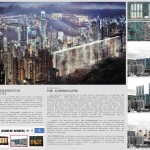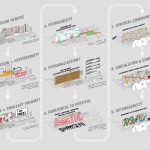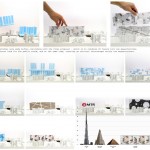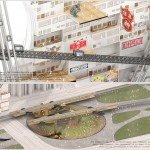Google search “Ping Feng”,it is a Screen and a nice piece of Chinese furniture for screening effect or spatial separation. Ironically, Screen Tower – “Ping Feng Lou”, became a negative nickname – referred to – a row of high-rise buildings when they stand closely as a cumulative wall/screen. They are criticized for its adverse effects on air flow and the blocking of sunlight and natural views for surrounding users by its wall-effect and segregation of existing neighborhood by its huge footprint.
Honorable Mention | RTFA 2014 Awards
Category: Mixed Use Concept
Participant Name: Wong Yok Fai Arnold
Country: China
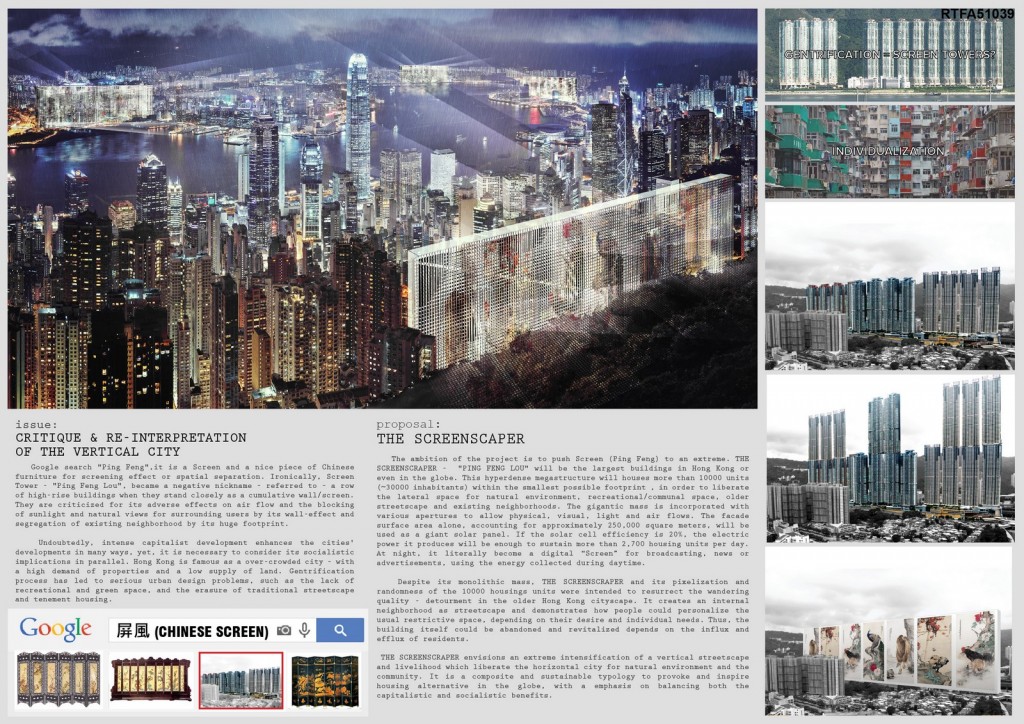
Undoubtedly, intense capitalist development enhances the cities’ developments in many ways, yet, it is necessary to consider its socialistic implications in parallel. Hong Kong is famous as a over-crowded city – with a high demand of properties and a low supply of land. Gentrification process has led to serious urban design problems, such as the lack of recreational and green space, and the erasure of traditional streetscape and tenement housing.
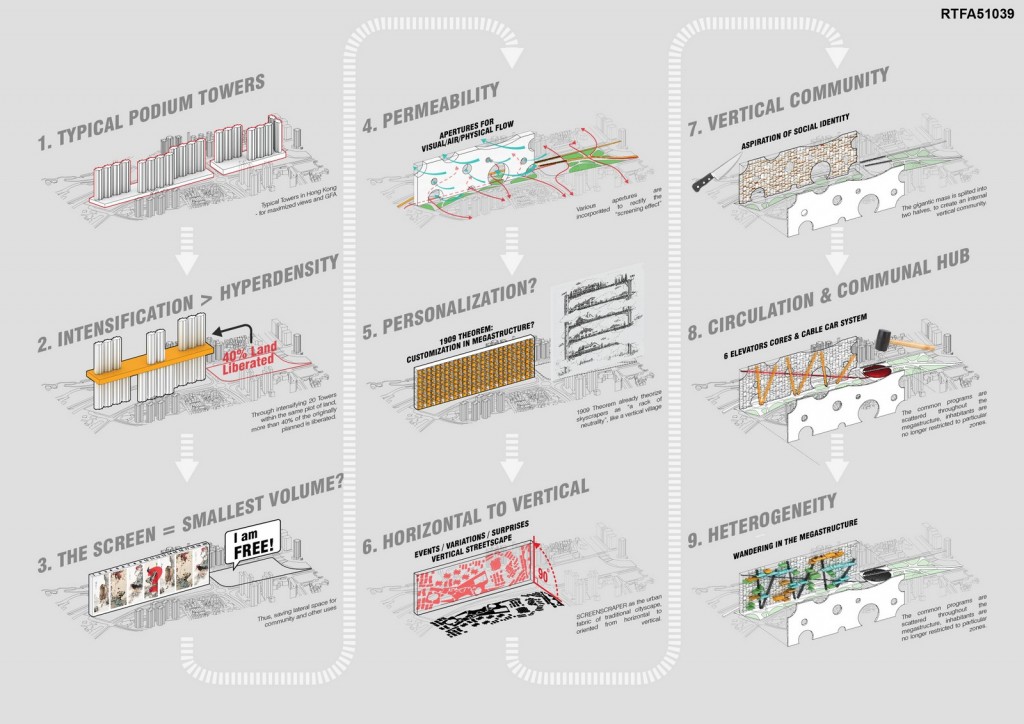
The ambition of the project is to push Screen (Ping Feng) to an extreme. THE SCREENSCRAPER – “PING FENG LOU” will be the largest buildings in Hong Kong or even in the globe. This hyperdense megastructure will houses more than 10000 units (~30000 inhabitants) within the smallest possible footprint , in order to liberate the lateral space for natural environment, recreational/communal space, older streetscape and existing neighborhoods. The gigantic mass is incorporated with various apertures to allow physical, visual, light and air flows. The facade surface area alone, accounting for approximately 250,000 square meters, will be used as a giant solar panel. If the solar cell efficiency is 20%, the electric power it produces will be enough to sustain more than 2,700 housing units per day. At night, it literally become a digital “Screen” for broadcasting, news or advertisements, using the energy collected during daytime.
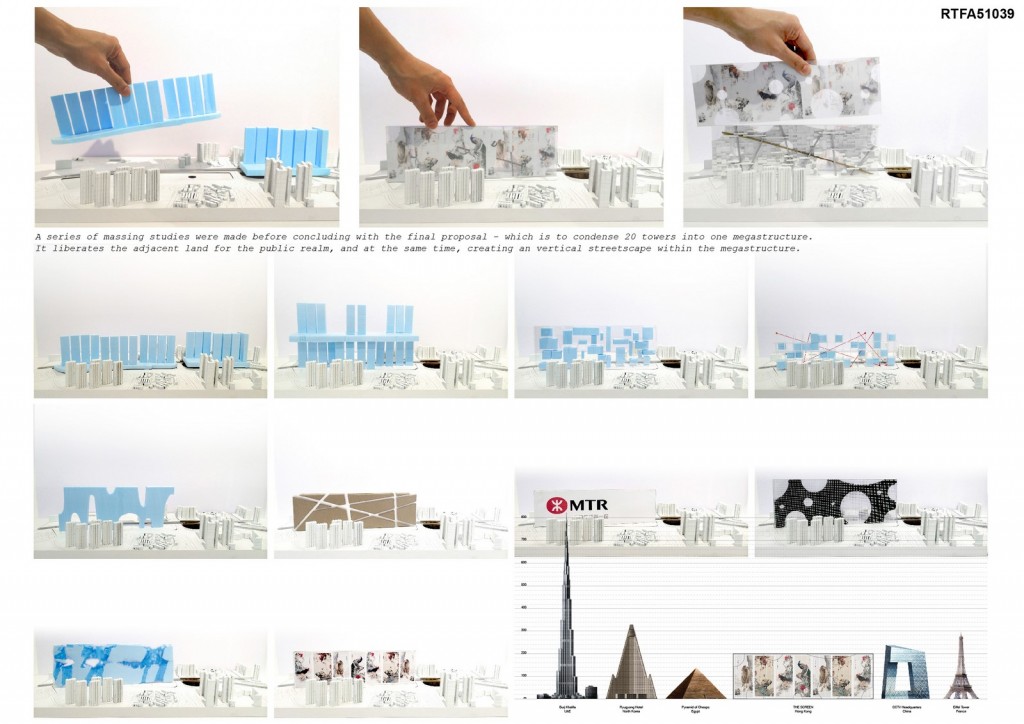
Despite its monolithic mass, THE SCREENSCRAPER and its pixelization and randomness of the 10000 housings units were intended to resurrect the wandering quality – detourment in the older Hong Kong cityscape. It creates an internal neighborhood as streetscape and demonstrates how people could personalize the usual restrictive space, depending on their desire and individual needs. Thus, the building itself could be abandoned and revitalized depends on the influx and efflux of residents.
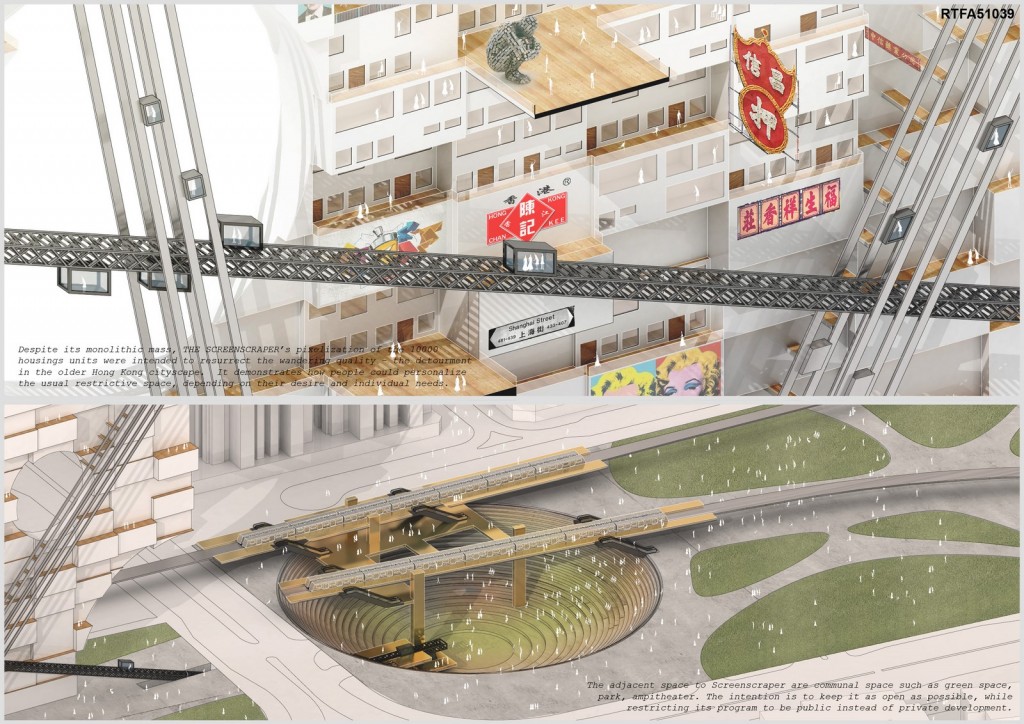
THE SCREENSCRAPER envisions an extreme intensification of a vertical streetscape and livelihood which liberate the horizontal city for natural environment and the community. It is a composite and sustainable typology to provoke and inspire housing alternative in the globe, with a emphasis on balancing both the capitalistic and socialistic benefits.
If you’ve missed participating in this award, don’t worry. RTF’s next series of Awards for Excellence in Architecture & Design – is open for Registration.
Click Here








